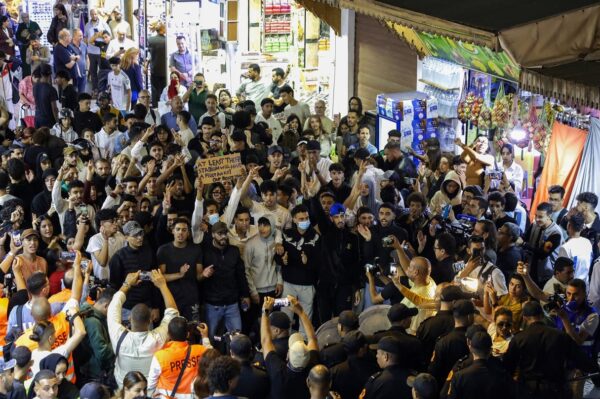Two people were killed on Wednesday evening in Lqliaâ, near Agadir, during clashes between gendarmes and young protesters gathered under the banner “Gen Z 212”, a direct reference to Morocco’s telephone code. According to local authorities, quoted by the official agency MAP, “law enforcement officers were forced to use their service weapons, in self-defense, to repel an assault attempt against the premises of the territorial brigade, in an attempt to seize ammunition, equipment, and weapons.”
A generational protest
This episode is part of a climate of increasing tension between Moroccan urban youth and institutions. Inspired by similar movements in Africa and elsewhere, “Gen Z 212” crystallizes a social revolt rooted in high unemployment, precarious living conditions, and a sense of political exclusion. The protests, initially sporadic, are now structured around unifying slogans, widely disseminated on social networks. They reflect a rejection of the established elites and a call for a redistribution of economic and social opportunities.
The mechanics of imbalances
The case of Lqliaâ illustrates the fragility of territorial balances: in these peri-urban areas where rapid population growth, massive unemployment, and weak public services coexist, any spark can degenerate into violent clashes. The youth, often educated but unemployed, see direct confrontation as a way to express accumulated frustration.
Echoing S&P Global Ratings’ report
The tragedy in southern Morocco resonates with the warnings published on October 1, 2025 by S&P Global Ratings. In its report entitled “Youth And Urbanization Threaten Emerging Markets’ Stability,” the agency highlights that the demographic growth of young people in the major cities of emerging markets, combined with a slowdown in economic growth, is a major factor of instability. According to analyst Valerijs Rezvijs, “job creation will be hindered by the prevailing trends of automation and artificial intelligence, particularly weighing on urban labor markets.” The study points to high risks in sub-Saharan Africa, but also in certain areas of Central Asia and the Caucasus.
If Morocco is not directly named, its demographic characteristics – a young, urban, and connected population – intersect with several of the identified criteria. The episode of Lqliaâ thus brutally illustrates the materialization of these risks in a national context.
The stakes for Rabat
For Moroccan authorities, the challenge is now twofold: maintaining public order while providing structural responses to the demands of a youth representing nearly a third of the population. Social stability will depend on the ability to create decent jobs, improve economic inclusion, and offer prospects to the new generations.


